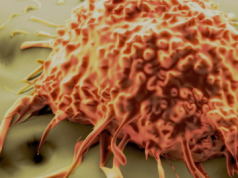Cardiovascular disease (CVD) refers to a variety of disorders affecting the heart and blood arteries, and it is a major cause of morbidity and death globally. While CVD affects both men and women, males experience it in a somewhat different way.
Historically, CVD has been more prevalent in men than in women. However, this gap has been narrowing in recent years, partly due to increased awareness and prevention efforts targeted towards women.
Men tend to have a higher prevalence of certain risk factors for CVD, including high blood pressure, high cholesterol levels, diabetes, obesity, and smoking. These risk factors contribute to the development of atherosclerosis (hardening and narrowing of the arteries), which is a common underlying cause of many cardiovascular conditions such as heart attacks and strokes.

While the classic symptoms of a heart attack (such as chest pain or pressure) apply to both men and women, men may be more likely to experience these symptoms. Women, on the other hand, may present with atypical symptoms such as shortness of breath, nausea, or back pain. This difference in symptom presentation can sometimes lead to delays in diagnosis and treatment in women.
Men typically experience CVD at a younger age compared to women. This may be attributed to a combination of genetic factors, hormonal differences, and lifestyle habits. However, as women age, particularly after menopause, their risk of CVD increases significantly.
Studies have shown that men and women may respond differently to certain cardiovascular treatments. For example, women may be more susceptible to certain side effects of medications such as statins. Additionally, women may be less likely to undergo invasive procedures such as coronary artery bypass surgery or angioplasty, which can impact their treatment outcomes.
Men may face unique psychosocial factors that impact their cardiovascular health, such as stress from work or family responsibilities, societal expectations around masculinity and stoicism, and reluctance to seek medical help or adhere to treatment plans.
Genetic predisposition plays a significant role in the development of CVD in both men and women. Hormonal factors, such as testosterone levels in men, may also influence cardiovascular health, although the exact mechanisms are still under investigation.
Socioeconomic status can also influence the risk of CVD in men, with those in lower socioeconomic groups experiencing higher rates of risk factors such as smoking, poor diet, and limited access to healthcare.








